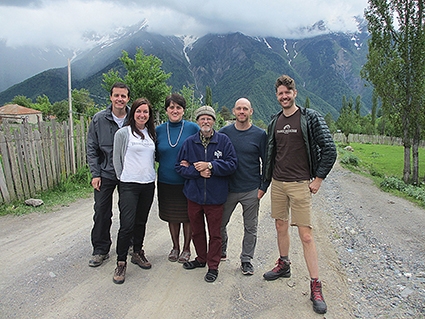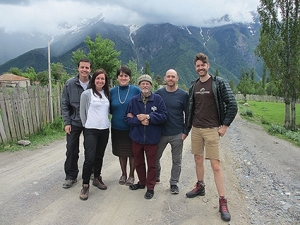Trail Blazers
For all my nearly two decades visiting Svaneti on average three times a year and then just taking the plunge and moving here, I’ve spent relatively very little time off-road. Even my 2007 walk from Etseri to Ushguli and back was all on the main roads. That could, and should, change soon, with good reason. How much am I missing, aside from the odd hike or horse trip I’ve made, much too few and far between?
What communities do you think of if I say “Svaneti”? Mestia and Ushguli as a start, likely. Upper Svaneti’s capital, and its highest village (highest in Georgia, and Europe, too). What about Dizi, source of most of the marble and alabaster of the magnificent stations of the Moscow Metro? Etseri, location of the highest of all Svaneti’s watchtowers? Becho, with unparalleled views of Ushba side-on? Mulakhi, Ipari (which one?), Pari (which means “shield” in Georgian), K’ala, Adishi, Nak’ra, Letekhi, Lenjeri, Latali, and more, each with something special to recommend it. Which village has more churches per capita than any other in Georgia? Above which can you get the peaks of Ushba and Elbrus in the same view? How many mineral springs are there here, and where are they exactly? Best church icon collection?
A hiking trail is being set up through large parts of Georgia and Armenia, a grand project which will link many national parks and bring new visitors to hitherto unexplored villages. It is being planned and produced by an energetic group of foreigners who have one thing in common: significant time already spent in the region, leading to a deep love of it, going back 15 years (Several of them were also Peace Corps volunteers) and hailing from the USA, Canada, UK and Poland. The Georgian Ministry of Tourism supports the work, too. See http://transcaucasiantrail.org/en/ for all the details.
Most of the group has recently been touring all over Svaneti, holding village information meetings. Not just to inform the locals, but also to hear their views and get their blessing for the project if they agree with it, which has always been the case. Local people will hopefully be involved as volunteers in making the trail, and it will support their communities’ infrastructure through bringing tourist attention and money. They can host people in their homes, guide them in and around the things which make each village unique, introduce them to local culture and language, and more. After all, Svaneti (for example) is more than just Mestia and Ushguli! And every village here is worth getting to know, for its own special reasons.
The entire trail will be mapped, including an online version to which people can add details, such as guest house locations, museums, ancient features and so on. This puts anyone onto the world stage of the Internet, and gives all these communities a chance to shine in their unique ways. The initial project may last some years, as trails need to be made or at least renovated, as well as marked and mapped out accurately using GPS and other tools. Once it is finished, it must then be maintained: kept free of rock-falls and excess vegetation, its guide markings repainted and so on. But the main work will have been done.
This summer, the physical work will focus on building the trail connecting Upper Svaneti and Racha, as well as widening and renovating it where it already exists. A fairly large undertaking, perhaps, but with local help and enthusiasm it can be done. This is all for you, Svaneti, Georgia, Armenia, Caucasus!
Tony Hanmer runs the “Svaneti Renaissance” Facebook group, now with over 1300 members, at
www.facebook.com/groups/SvanetiRenaissance/
He and his wife also run their own guest house in Etseri:
www.facebook.com/hanmer.house.svaneti
Tony Hanmer












